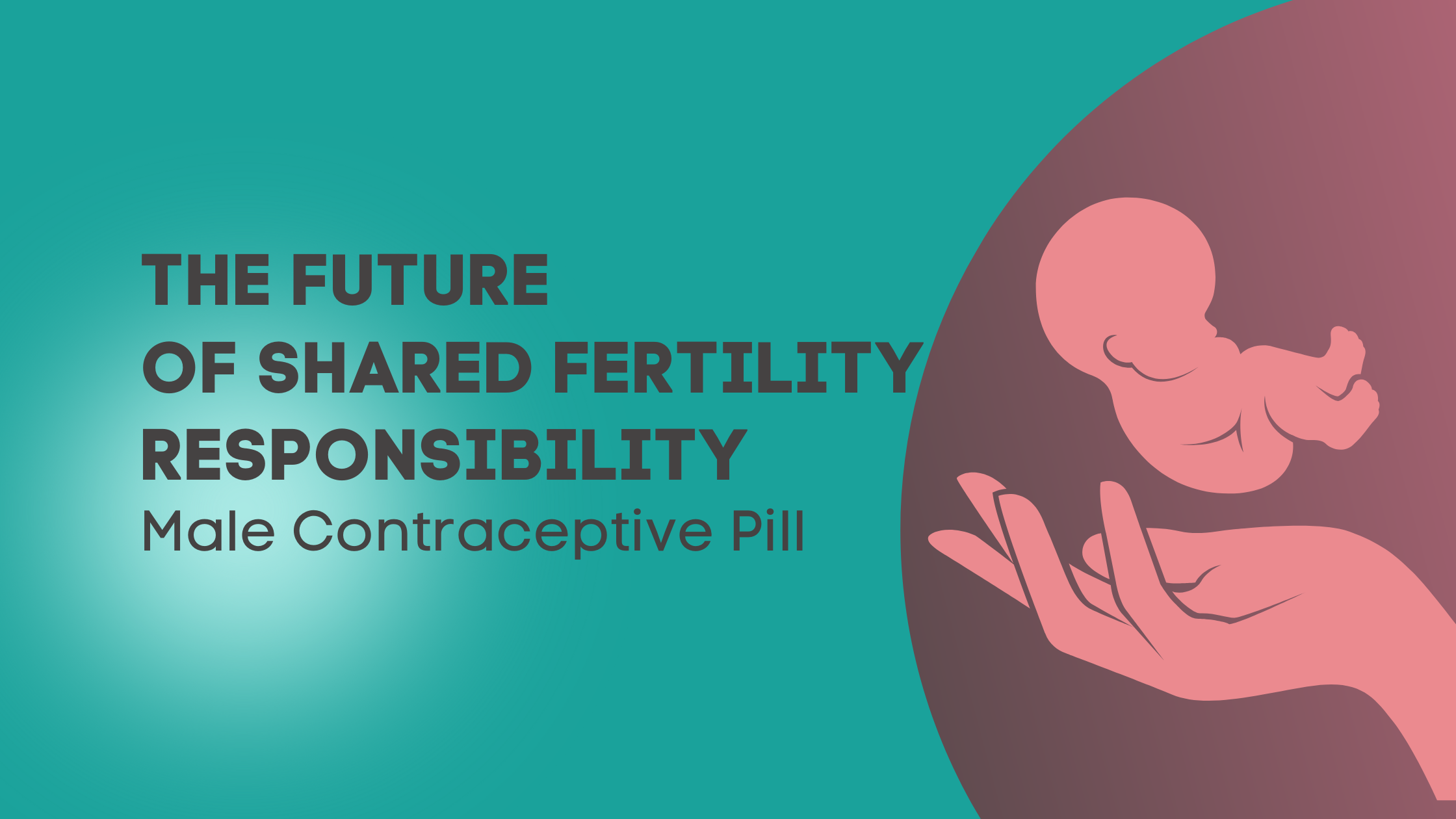The long-awaited shift in contraceptive equity is approaching—discover how male birth control options could transform women's health and relationship dynamics in Australia
For decades, the responsibility of contraception has largely fallen on women's shoulders. From hormonal pills to IUDs, implants, and injections, women have navigated the complex landscape of birth control, often dealing with side effects that impact their hormonal health and overall wellbeing. But change is on the horizon, and it's time to explore what the development of male contraceptive options might mean for Australian women and their partners.
The Current State of Male Contraception Development
The concept of a male contraceptive pill isn't new—researchers have been exploring various approaches for decades. However, recent advances have brought us closer than ever to seeing this option become a reality. Unlike female contraception, which primarily works by preventing ovulation, male contraceptives aim to reduce sperm count or mobility to levels that prevent pregnancy.
Several promising candidates are currently in clinical trials, including hormonal options that use testosterone and progestin combinations, as well as non-hormonal approaches that target specific proteins involved in sperm development or function. These innovations represent a potential shift in how we approach reproductive responsibility.
How Male Contraceptives Work
Understanding the science behind male contraception can help us better appreciate both its potential and limitations. Most approaches fall into two main categories:
Hormonal Methods
Similar to female hormonal contraception, these work by suppressing the hormones that stimulate sperm production. By administering testosterone along with a progestin, these methods create a negative feedback loop that signals the body to reduce sperm production while maintaining other male characteristics and sex drive.
Non-Hormonal Methods
These target specific processes or proteins essential for sperm development without altering hormone levels. This approach potentially offers fewer side effects while still providing effective contraception.
The Comparison: Male vs. Female Contraceptive Options
When considering any new contraceptive method, it's natural to compare it with existing options. Here's how male contraceptives might compare to traditional female methods:
| Aspect | Female Contraception | Potential Male Contraception |
|---|---|---|
| Effectiveness | 91-99% effective depending on method | Early trials suggest 90-97% effectiveness |
| Side Effects | Can include weight gain, mood changes, decreased libido, spotting, nausea | Early trials report weight gain, mood changes, acne, decreased libido |
| Hormone Impact | Affects female reproductive hormones, which influence many body systems | May disrupt male hormonal balance with similar systemic effects |
| Reversibility | Most methods reversible, timeframe varies | Expected to be reversible, but complete data pending |
| Convenience | Daily pills, regular injections, or long-term implants/devices | Likely daily pills or regular injections |
It's striking to note the similarities in potential side effects between male and female hormonal contraception. Many of the symptoms women have been managing for generations—mood changes, weight fluctuations, and libido issues—appear in male trial participants as well, highlighting that hormonal intervention affects all bodies, regardless of gender.
What This Means for Women's Health
For women who have experienced negative effects from hormonal contraception, the development of male alternatives could represent an opportunity to give their bodies a break. The pill effecting ovulation has been a concern for many women, particularly those who have noticed changes in their fertility after long-term use.
Balance Me, designed to naturally support hormone imbalance that can result from using female contraception, has helped many women restore equilibrium to their hormonal systems. But wouldn't it be better if women didn't have to experience these imbalances in the first place?
The introduction of viable male contraceptive options could allow couples to alternate responsibility, potentially reducing the cumulative impact of hormonal contraception on women's bodies and creating a more equitable approach to family planning.
The Psychology of Shared Responsibility
Beyond the physical aspects, the development of male contraception opens up important conversations about reproductive responsibility. For generations, society has implicitly assigned fertility control to women, with men's options limited primarily to condoms or vasectomy.
A shift toward shared contraceptive responsibility could transform relationship dynamics, fostering more open communication about family planning and sexual health. For women who have felt the weight of this responsibility, having partners who understand and are willing to participate in contraception could strengthen trust and partnership.
However, this transition will require addressing deeply ingrained societal attitudes about gender roles in reproduction. Some research suggests men may be hesitant to use hormonal contraception due to concerns about side effects—the very same effects women have been managing for decades.
The Australian Perspective
In Australia, interest in male contraceptive options appears to be growing. A 2019 survey found that approximately 70% of Australian men would consider using a hormonal contraceptive if it became available. This suggests a potential market readiness that could accelerate development and availability.
Australian researchers are contributing to global efforts, with teams at Monash University and elsewhere investigating promising approaches to male contraception. Given Australia's historically progressive stance on reproductive health, there's potential for the country to be among the early adopters of male contraceptive options once they're approved.
When Will the Male Pill Be Available?
Despite promising progress, the timeline for widespread availability of male contraceptive pills in Australia remains uncertain. Most experts suggest that we're still several years away from seeing these options in pharmacies.
The most advanced candidates are currently in phase II clinical trials, with phase III trials and regulatory approval still ahead. Based on typical drug development timelines, optimistic estimates suggest availability within 5-10 years, but regulatory hurdles and funding challenges could extend this timeline.
It's worth noting that pharmaceutical investment in male contraception has historically been limited compared to other drug categories, potentially slowing development. However, increased public interest and acknowledgment of the market potential could accelerate progress.
Preparing for a New Era of Contraception
While we await the arrival of male contraceptive options, there are steps couples can take to share reproductive responsibility more equitably:
- Open communication about contraceptive choices and their effects on both partners
- Education about fertility awareness methods that involve both partners in tracking fertility signs
- Shared responsibility for contraceptive costs and medical appointments
- Support for women dealing with contraceptive side effects
- Advocacy for increased research funding for male contraceptive development
For women currently experiencing hormone imbalances related to contraception, natural support options like Balance Me can help manage symptoms while we wait for more equitable contraceptive solutions.
Frequently Asked Questions
When will the male contraceptive pill be available in Australia?
While significant progress has been made, male contraceptive pills are still in clinical trials. Most experts estimate availability within the next 5-10 years, though this timeline could change based on trial results and regulatory processes.
How effective is male contraception compared to female birth control methods?
Current trial data suggests effectiveness rates between 90-97% for male hormonal contraceptives, which is approaching but still slightly lower than the most effective female methods (which range from 91-99%). However, as with female contraception, effectiveness depends greatly on consistent and correct use.
What are the side effects of male contraceptive options?
Early trials have reported side effects including weight gain, mood changes, acne, decreased libido, and in some cases, changes in cholesterol levels. Interestingly, these mirror many of the side effects women have been experiencing with hormonal contraception for decades.
Will male contraception reduce the need for women to use hormonal birth control?
Potentially, yes. The introduction of male contraceptive options could allow couples to alternate responsibility or choose the option that works best for their specific situation. This could reduce the cumulative impact of hormonal contraception on women's bodies while maintaining effective pregnancy prevention.
Looking Ahead
The development of male contraceptive options represents a potential turning point in how we approach reproductive health and responsibility. For women who have carried this burden alone, the prospect of sharing contraceptive duties more equitably offers not just physical relief but a meaningful shift toward true reproductive partnership.
While we're still years away from seeing these options widely available, their development opens important conversations about gender equality in reproductive health. The journey toward shared contraceptive responsibility is just beginning, but it promises a future where family planning truly becomes a shared endeavor.
In the meantime, women navigating the challenges of hormonal contraception can find support through natural solutions like Balance Me, designed specifically to help restore hormonal equilibrium and manage the side effects that come with carrying this responsibility.
Navigating hormonal health is a journey I understand personally. Having seen countless women struggle with the effects of long-term contraceptive use, I'm cautiously optimistic about the possibilities male contraception presents. While we wait for these options to become reality, remember that your hormonal health matters, and support is available.
Stay informed, stay empowered,
Heidi x
If you're experiencing hormonal imbalances related to contraceptive use, learn more about natural support options in my recent blog: The New Women's Health Initiative: What Australian Women Need to Know.





